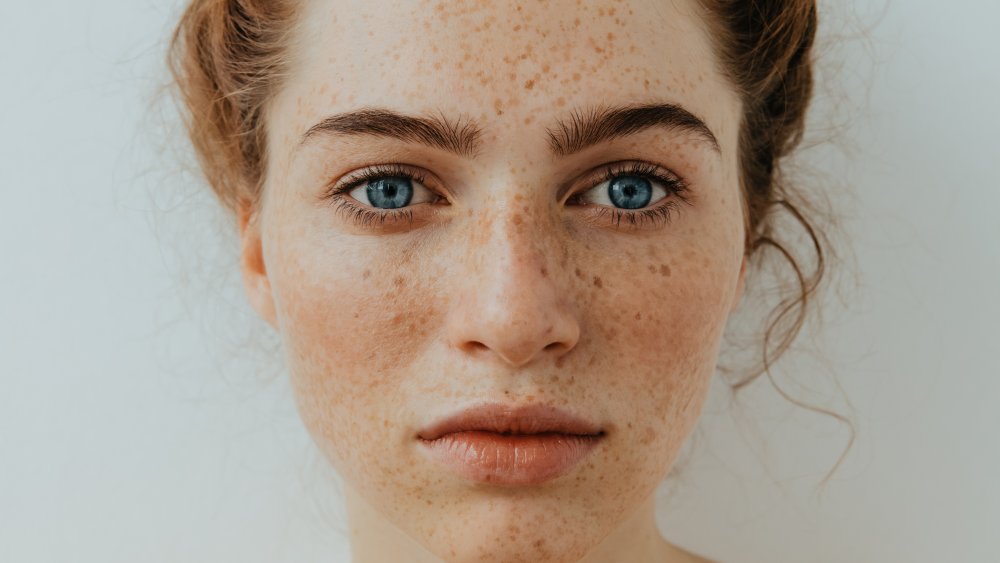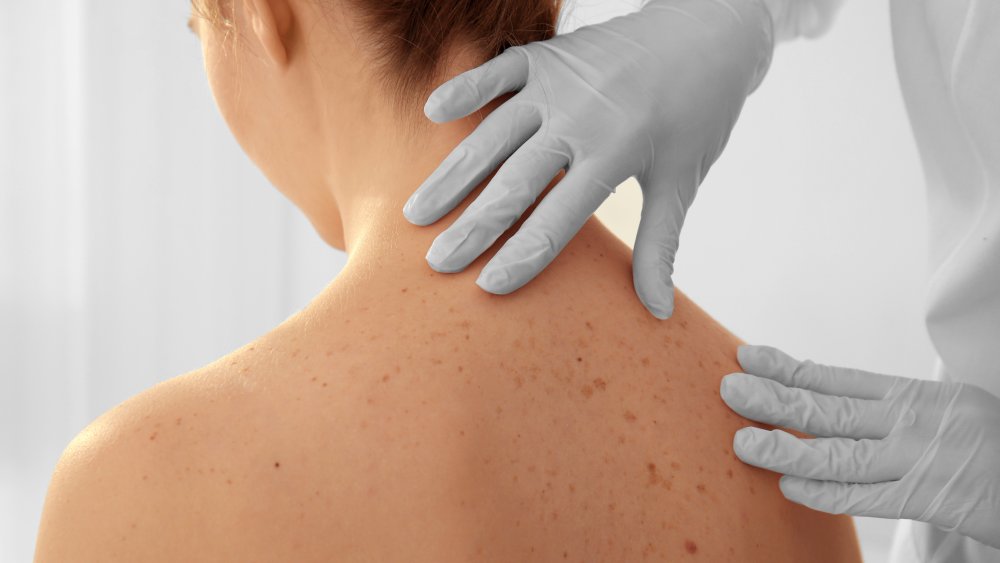Here's Where Your Freckles Actually Come From
You may have been blessed with them at birth or you may see them crop up when you spend time in the sun, but most of us have at least a few freckles. Known as ephelides to the experts, freckles are those tan, brown, or even red spots that are usually scattered across the face or arms. The thing that delineates them from other marks on the skin, such as moles, is that they are flat, according to the Mayo Clinic.
Freckles are the result of genetics mixed with sunlight. Your genetic makeup sets how many melanocytes your body has; those are the cells that create the pigment melanin, according to Insider. In people with freckles, melanocytes are spread across the skin in clusters. When exposed to the ultraviolet light of the sun, the melanocytes increase their pigment production, creating freckles. It's common for freckles to darken in summer and fade in winter when most of us spend less time in the sun. In some people, they may lighten with age, or even disappear entirely (per WebMD).
When should you worry about freckles?
Most freckles are entirely harmless and no cause for concern. If you see any changes in one — for example, if it develops a darker patch inside it or is raised off the skin — then it's time to consult with a doctor. Other things to watch out for are soreness or the development of jagged borders on a freckle.
Freckles can be easily confused with similar-looking spots called solar lentigines, otherwise known as age spots. These are not related to genetics, however, but entirely dependent on sun exposure over years. While freckles can disappear with age, solar lentigines usually increase in number and darken as we age.
Protecting against sun exposure through the use of broad-spectrum sunscreen will help prevent freckles from getting darker. Look for a sunscreen with SPF of 30 or more, and consider wearing clothing with Ultraviolet Protection Factor (UPF) built in. Not all fabrics protect against ultraviolet rays, according to the Skin Cancer Foundation, so keep an eye out for labels that indicate some UPF.


